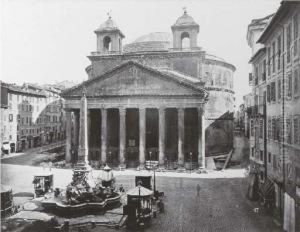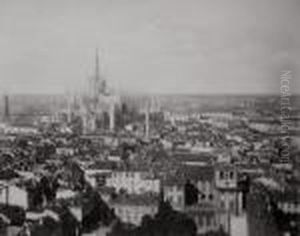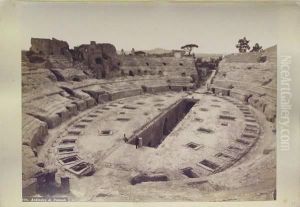Giacomo Brogi Paintings
Giacomo Brogi was an Italian photographer born in 1822 in Florence, Italy, and passed away in 1881. He is renowned for his pioneering work in the field of photography during the 19th century, a period that witnessed the medium's rapid development and growing popularity. Brogi began his career as a photographer in 1856, opening his first studio in Florence. His work was primarily focused on capturing the beauty and historical significance of Italy's landscapes, architecture, and artworks, making significant contributions to the documentation of Italian heritage.
Brogi's photographs are characterized by their meticulous composition, clarity, and attention to detail, qualities that made his work highly sought after by tourists and art enthusiasts of his time. He traveled extensively throughout Italy, including cities like Rome, Naples, and Venice, capturing their iconic monuments, ruins, and artworks. His photographs of the ruins of Pompeii, the architectural wonders of Rome, and the picturesque landscapes of the Italian countryside were particularly acclaimed.
In addition to his landscape and architectural photography, Brogi was also known for his portraiture and his innovative use of lighting and perspective, which added depth and realism to his photographs. He became one of the first photographers to catalogue art and architecture systematically, creating a valuable archive for future generations.
Brogi's work was not only significant in terms of its artistic merit but also played a crucial role in promoting Italian culture and heritage abroad. His photographs were collected in albums and sold to travelers, becoming some of the earliest forms of tourist souvenirs. They were also used for educational purposes, helping to spread knowledge of Italian art and history around the world.
After his death in 1881, Giacomo Brogi's studio continued to operate under the direction of his son, Carlo, ensuring that his legacy lived on. Today, Brogi's photographs are held in high esteem, not only as beautiful works of art but also as invaluable historical documents that provide insight into 19th-century Italy. His contributions to the field of photography and the preservation of cultural heritage have established him as a pioneering figure in the history of photographic art.


